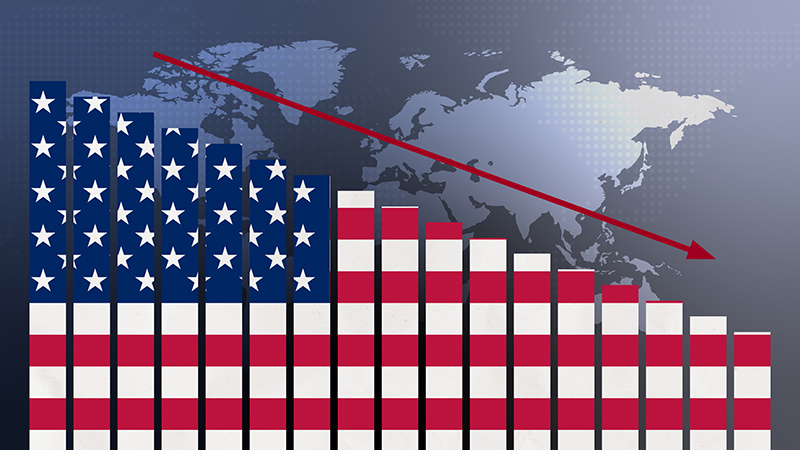Asian equity funds have been unexciting for much of the past three years. The heady gains to be made in India have been flattened by the grim performance of the Chinese markets, leaving the average fund flat. However, there are three key factors that could change the script for Asian markets from here: technology, China and economic growth.
The turning in the technology cycle could be a galvanising force for Asian markets more widely. While technology is considered a US phenomenon, technology forms an increasingly large part of Asian indices. TSMC alone is almost 10% of the MSCI Asia ex Japan index, Samsung is another 4.3%, and both companies come with a vast ecosystem tied to their fortunes.
Abbas Barkhordar, co-manager on the Schroders Asia Pacific and Schroders Oriental Income funds, says: “We’re really positive on the Asian IT sector. In Asia, the story is more around technology hardware and the two key markets are Taiwan and Korea. Korea tends to be more focused on memory, and Taiwan more on the logics side, including AI and 5G. They are crucial to the technology ecosystem across the world.
Barkhordar says the world is dependent on the products created in the region: “Apple, Nvidia, their key products are manufactured in Taiwan.” Equally, the requirements are getting more complex, with electric cars, for example, requiring more sophisticated chips, and AI requiring vast processing and analytics capabilities.
See also: Is the landscape finally changing for commodities?
Barkhordar believes there are both structural and cyclical reasons to believe the sector is due a revival: “There is the structural growth of AI, 5G and beyond, in terms of very high end communication, plus digitisation and moving things to the cloud. This is making lots more industries digital and semiconductor-heavy. That’s a structural growth theme that benefits certain companies in Taiwan and Korea.
“But there is a strong cyclical element as well. Shortly after Covid, there was a huge shortage of semiconductors because everyone wanted to upgrade their IT at the same time. Supply couldn’t keep up. That came online in 2022, just at the point where inflation started to take off in the West. That put a squeeze on consumer disposable income and spending on consumer electronics, laptops and phones. There has been an enormous glut from 2022 to the start of this year, where there’s been a huge oversupply of lots of goods.”
Inventories have now started to normalise, and companies have started to pick up orders and see growth in earnings. “This cyclical side has really helped technology performance in the last six months,” he says.
While this benefits the big names, there is a broader ecosystem that benefits. James Thom, manager on the Asia Dragon trust, sees Asia as being in the sweet spot to capitalise on the AI boom. It has TSMC as one of its core positions, but also holds smaller companies such as Yageo Corporation, which is benefiting from the rise in computing power.
China revival
The turn in the Chinese market may also be a tailwind for Asian equities. It is noteworthy that the top-performing fund in the sector – Jupiter Asian Income – has held no Chinese exposure since 2022. The level of China exposure has been the biggest single factor in the under or outperformance of different managers within the sector. Even where active managers have been light on Chinese equities, the weakness of China has acted as a drag on sentiment towards Asian equities more widely.
See also: Does India deserve its premium to emerging markets?
In the very short-term, there are signs of a recovery in China. Funds in the China/Greater China sector are up 15.1% over the last three months, making it the top-performing sector. This appears to have been the deciding factor in an improvement for funds in the wider Asia ex Japan sector as a whole, which are up 8.3% on average over the same period.
Asian growth
A final galvanising factor for the region is the overall level of growth in Asia. GDP for emerging and developing Asia is set to grow at 5.2% in 2024 and 4.9% in 2025. This is far faster than any other major region. US GDP is predicted to grow at 2.7% and 1.9% over the next two years, while the Euro area is expected to grow at 0.8% and 1.5%. Even high growth emerging areas such as sub-Saharan Africa cannot match the growth rates in Asia.
There is also a lot of money in motion in Asia as capital moves away from China to other cheap areas of manufacturing, such as Vietnam, India and Thailand. Foreign investment in Vietnam reached $6.3bn in the first four months of 2024, the highest in five years, with over 51,000 newly established businesses over the same period, according to data released from the General Statistics Office. The ‘China plus One’ strategy is already well established and is boosting and diversifying Asian economies, while creating new opportunities for investors.
There is a final question over whether it is possible to take exposure to the Asian growth story without investing directly in Asia. The team on the J Stern World Stars Global Equity fund see plenty of opportunity across the region. Co-manager Katerina Kosmopoulou says it is telling that while TSMC is putting new fabs into the US and Germany, the largest expansion it is doing is in Taiwan, adjacent to one of their existing factories. She also believes this should also put any China/Taiwan risks into perspective.
However, they prefer to take exposure via European or US-based companies because of corporate governance concerns. They have holdings such as infrastructure group Sika, which is making significant investments into India: “Because of geopolitical concerns, there is a significant shift of manufacturing capacity into India as an alternative market. The CEO of Sika, one of our major holdings, says that India is where China was 10 years ago.”
Asian equity funds may now lose the headwind of China, and gain the tailwind of the technology cycle. While skilled managers have been able to make money over the past three years, it should provide a more benign backdrop for the region’s managers from here.











